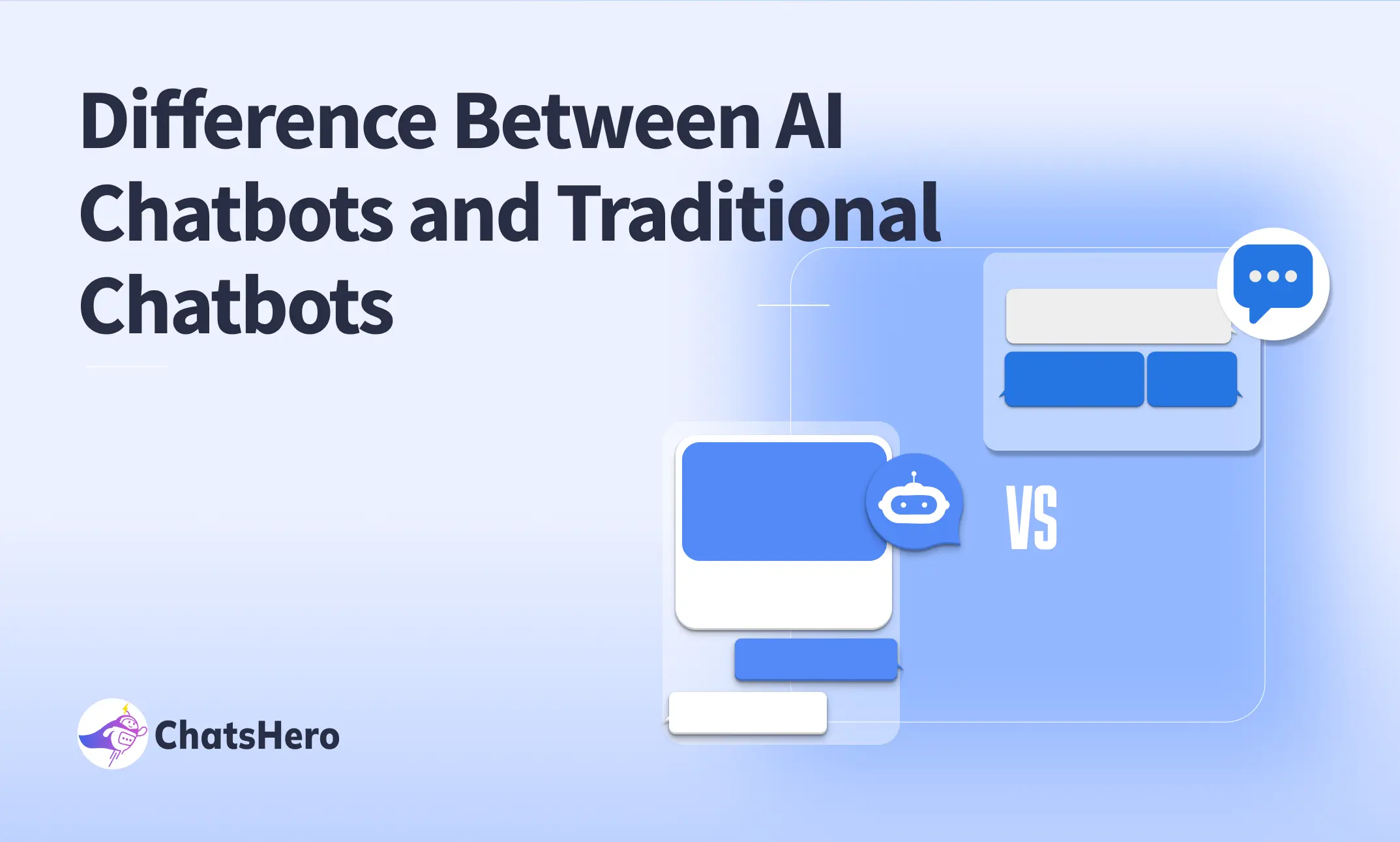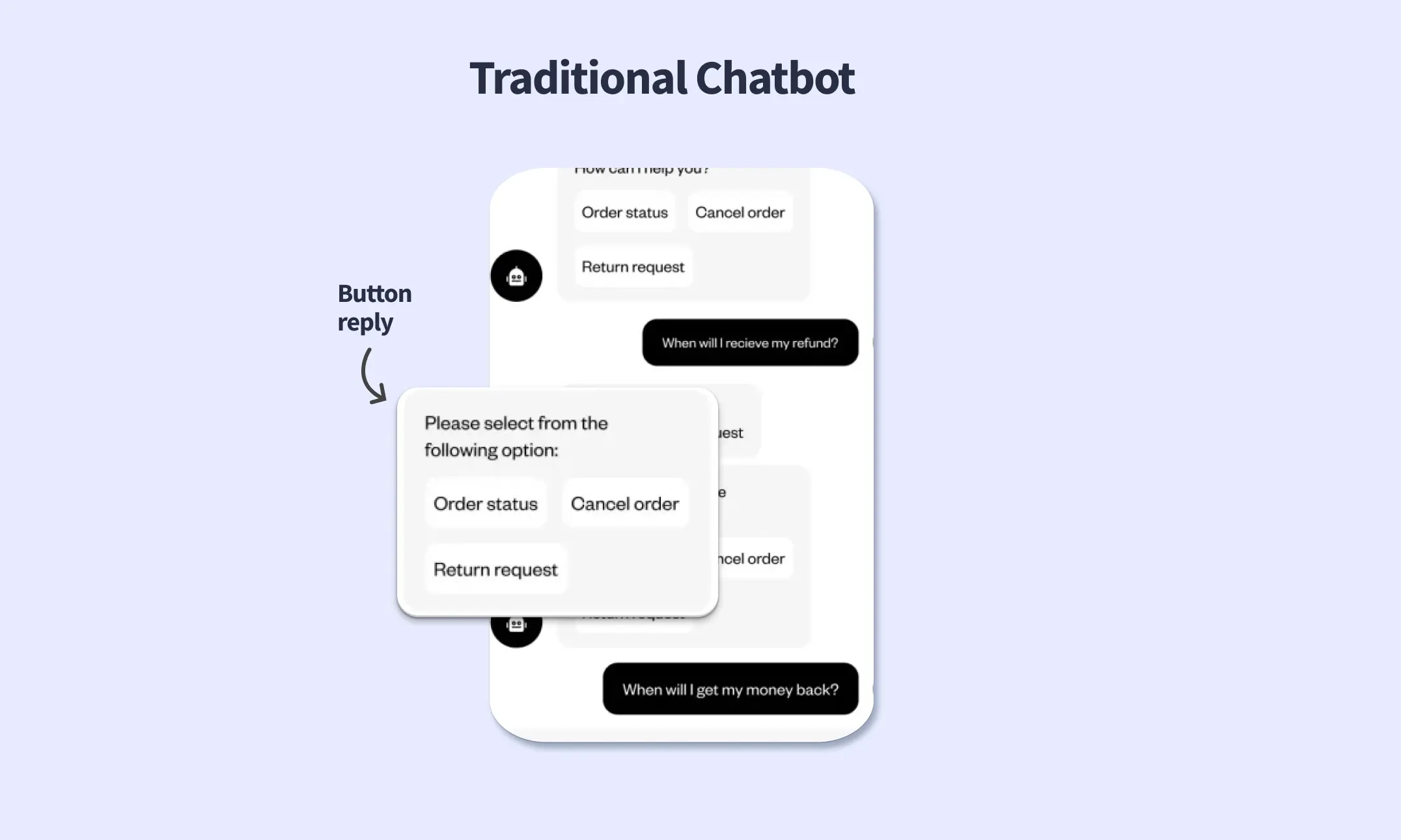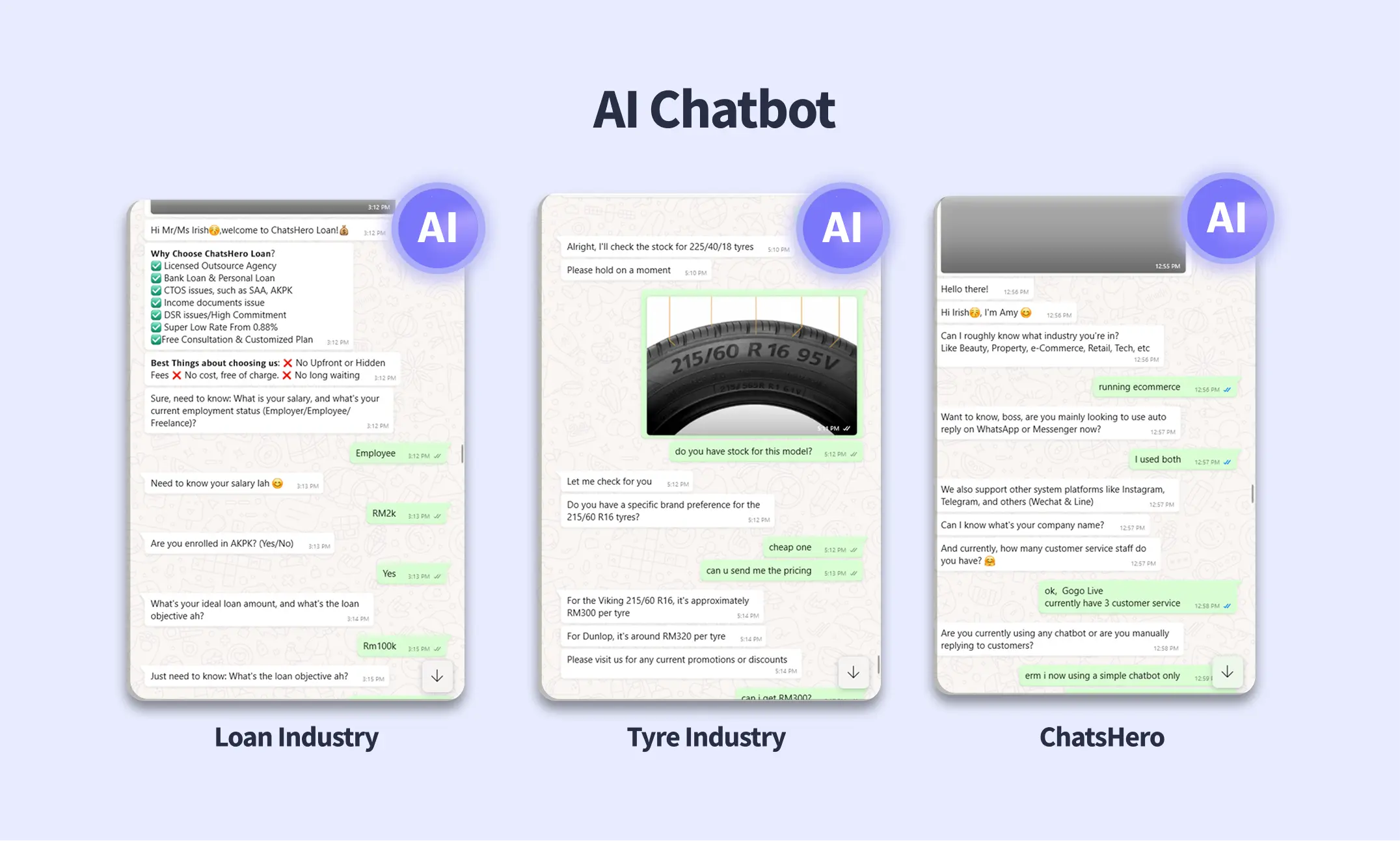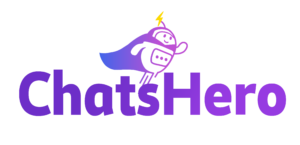The Difference Between AI Chatbots and Traditional Chatbots: A Complete Guide for Businesses

Chatbots have become essential tools for modern businesses looking to automate customer interactions, streamline operations, and boost user engagement. However, as chatbot technology has evolved, two distinct types have emerged: traditional chatbots and AI chatbots.
While both serve the same basic purpose—communicating with users—they function in very different ways. If you’re a business owner or marketer evaluating chatbot solutions, it’s crucial to understand how AI chatbots differ from traditional (rule-based) chatbots, and which one aligns better with your goals.
In this guide, we’ll break down the core differences, real-world use cases, and pros and cons of each, and show you how ChatsHero can help you harness the best of both worlds.
What is a Traditional Chatbot?

A traditional chatbot, also known as a rule-based chatbot, operates based on scripted logic. It follows predefined rules and decision trees built by the developer or chatbot builder. Each user input must match a specific keyword, trigger, or button to move forward in the conversation.
How Traditional Chatbots Work
- You define a fixed flow, such as “If the user selects option A, go to step B.”
- The chatbot doesn’t understand natural human language.
- It waits for specific input, like “1”, “Order status”, or a click on a quick reply button.
- If the user types something unexpected, it may return an error or default response like “I didn’t understand that.”
Strengths of Traditional Chatbots
- Easy to build, even without coding skills
- Great for simple menus, FAQs, and fixed journeys
- Reliable for repetitive tasks (e.g., store hours, basic inquiries)
Limitations
- No natural language understanding
- Cannot process user intent or emotions
- Struggles when users ask anything out of the script
What is an AI Chatbot?

An AI chatbot is a more advanced system powered by Artificial Intelligence, specifically Natural Language Processing (NLP) and Machine Learning (ML). These bots are capable of understanding and interpreting human language, including misspellings, slang, and context.
Instead of relying on rigid menus, AI chatbots analyze user input to determine intent and respond with the most relevant answer.
How AI Chatbots Work
- Use NLP to understand user language and tone
- Detect intent behind messages, not just keywords
- Reliable for repetitive tasks (e.g., store hours, basic inquiries)
- Improve over time through machine learning based on real conversations
How AI Chatbots Work
- Understand free-text and complex queries
- Deliver highly personalized answers
- Learn and adapt over time
- Capable of multi-turn conversations and context handling
Limitations
- Use NLP to understand user language and tone
- Detect intent behind messages, not just keywords
- Reliable for repetitive tasks (e.g., store hours, basic inquiries)
- More technical knowledge or platform support may be needed
Traditional Chatbot vs AI Chatbot: Side-by-Side Comparison
| Feature | Traditional Chatbot | AI Chatbot |
|---|---|---|
| Core Technology | Rules, decision trees | NLP, machine learning |
| Language Understanding | Limited (exact keywords) | Advanced (natural language) |
| Flexibility | Rigid | Adaptive |
| Personalization | Low | High |
| Learning Capability | No | Yes |
| Handling Unexpected Input | Poor | Good |
| Setup Complexity | Simple | Moderate to high |
| Best Use Cases | FAQs, guided flows | Customer support, sales, lead qualification |
| Human-Like Experience | ❌ | ✅ |
Real-World Examples
Traditional Chatbot Use Case:
A retail store chatbot answers:
- “What are your opening hours?”
- “Where is your location?”
- “Track my order” (with tracking number input)
AI Chatbot Use Case:
A customer says:
- “Hey, I ordered yesterday but haven’t received the tracking link. Can you check it for me?” The AI chatbot identifies the customer, checks the database, and replies:
- “Hi Alex! I found your order #1234. It was shipped this morning and here’s your tracking link: [link].”
Which One Should You Choose?
Choose Traditional Chatbots If:
- You need a fast, low-cost solution
- Your chatbot is answering static, repetitive questions
- You’re new to automation and want a simple start
Choose AI Chatbots If:
- You deal with a large volume of customer inquiries
- Your users ask complex or varied questions
- You want a conversational and natural experience
- You’re aiming for long-term automation and personalization
How ChatsHero Combines the Best of Both
At ChatsHero, we understand every business has different needs. That’s why our chatbot system supports both rule-based and AI-powered chatbots—allowing you to customize the automation that fits your customer journey.
What Makes ChatsHero Unique?
- Drag-and-drop builder for rule-based flows
- Integrated AI NLP module for open-ended replies
- Connects to WhatsApp, Messenger, Instagram, Website & more
- Centralized dashboard with analytics and user tracking
- Supports Google Sheets, CRM systems, and live agent handovers
- Option to scale from basic to intelligent automation as your business grows
- Use a rule-based flow to collect leads
- Then use AI to handle unpredictable customer questions automatically
Conclusion
Understanding the difference between traditional and AI chatbots is key to making the right decision for your business.
Frequently Asked Questions
1. Can I use both chatbot types at the same time?
Yes. ChatsHero supports hybrid bots—rule-based for structured flows and AI for smart replies.
2. Is an AI chatbot better for sales?
Absolutely. AI chatbots can understand user intent, recommend products, and handle objections—all in real time.
3. Will an AI chatbot replace human agents?
No. It complements them. AI handles repetitive queries, while humans step in for complex issues.
4. Should I train AI chatbots regularly?
ChatsHero’s AI can adapt based on prompt but regular review and updates will enhance performance.
Further Reading
Want to learn more about automation for AI Chatbot? Check out these resources:
